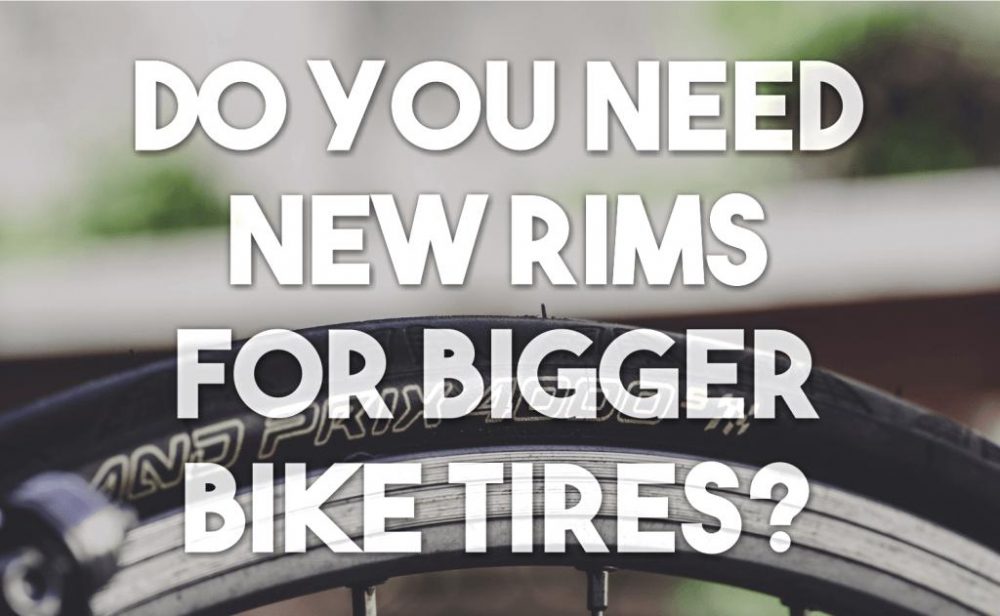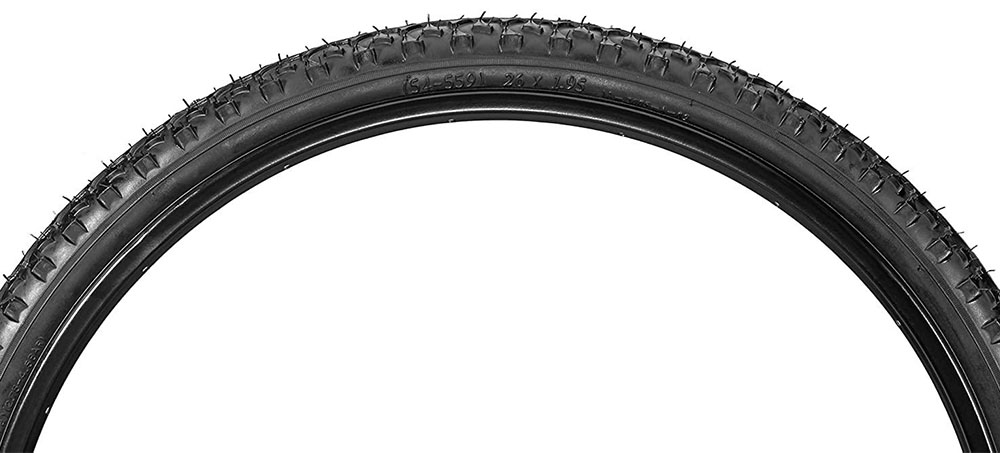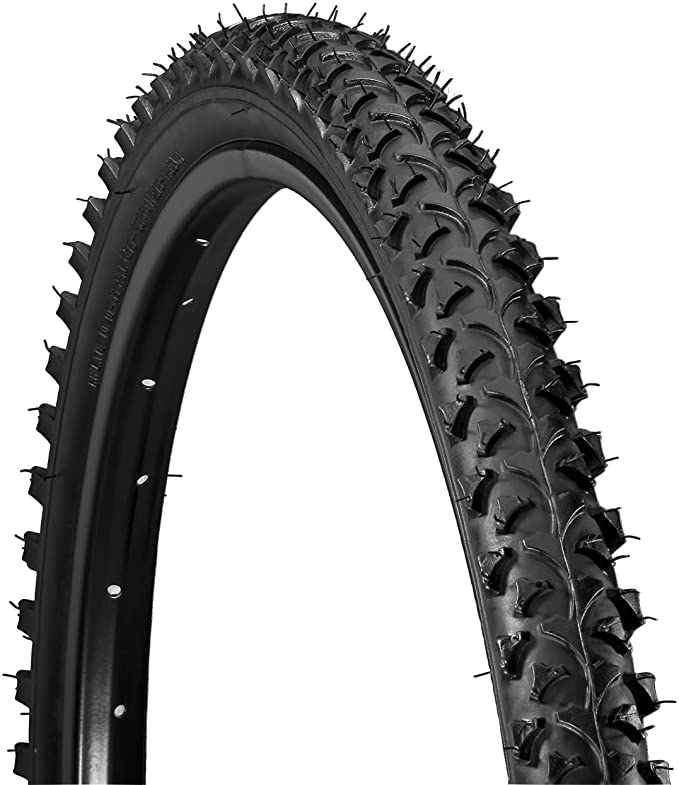Do you need new rims for bigger electric bike tires?
If you’re interested in changing the feel of your ride, consider fitting larger tires to your bike. However, before making any changes, you should consider whether you need new rims for larger electric bike tires.
Do you need new rims for bigger bike tires? If you want larger diameter tires, you will need to get new compatible rims. If you just want wider tires, your existing rims will probably work just fine.
Buying bigger tires for your bike shouldn’t be that complicated. However, there are some differences from one bike tire to another, and it’s not always easy to make the right choice. The bike you own and the way you ride it will influence your decision. Your bike’s rim will also affect your choice. Ultimately, though, you’re considering whether to get a larger diameter tire or a wider width tire.

Can you put bigger tires on the same rim?
Bicycle tire and rim sizes are designed for compatibility. There is a noticeable difference, but a larger diameter size and a larger width size. You should first understand how tire sizing works.
Tire diameter
Bicycle tire diameters can be measured in nominal (traditional) or actual (ISO) dimensions. The nominal size is vague and gives you a sense of relative size, but doesn’t tell you if the tire is compatible with your rim. The International Standards Organization has adopted a system that makes diameter dimensions clearer.
Known as the true tire size, the ISO diameter description is represented by two numbers – the inside diameter, or more importantly, the tire’s bead diameter (in millimeters), and the tire’s width (in millimeters) when fully inflated ). The bead of a tire is the part that connects to the rim, so the true tire size is determined by the so-called bead setting diameter (BSD).

Nominal size
Bicycle tires come in a variety of sizes. If you have an older bike, the dimensions are even more confusing. To add to the confusion, prior to the ISO standard, each country and most bicycle manufacturers had their own way of measuring tire sizes. This created a situation where tires of the same size would have different numbers in different countries. To make matters worse, tires of different sizes that are not interchangeable are often marked with the same number.
Traditional tire sizing systems are based on the measurement of the tire’s outer diameter. This is usually in inches (26, 27, etc.) or millimeters (650, 700, etc.).
As bicycle riding styles and tire manufacturing have evolved, tire and rim measurements have become more confusing. For example, a bicycle tire that measures 26 inches at a time may have been adjusted to meet customer demands for lighter and faster or larger and stronger. So even though it’s still considered a 26-inch tire, the outside diameter could be somewhere between 24-7/8 inches and 27 inches.
ISO size
The European Tire and Rim Technology Organization (ETRTO) developed a system in the late 1970s to make tire sizes more consistent and clear. Their diameter size indicates the size of the rim, not the outer diameter of the tire. This makes the ETRTO system the most reliable guide for determining which tire fits which rim.
ISO adopts this system in use all over the world. ISO tire size is described by two numbers – the first number defines the width of the tire in millimeters, and the second number defines the diameter around the inside edge (BSD) of the tire, also in millimeters. For example, ISO size 25-622 describes a tire with a width of 25mm and a bead diameter of 622mm. ISO dimensions will be stamped on the tire sidewall or molded into the rubber.
The key ISO dimension is three digits or BSD. BSD is the most important measurement to determine if a given tire and rim are compatible.
Typical tire diameter
Today’s standard adult bicycles come in six common tire diameter sizes:
ISO 559 – This is the size used by most mountain bikes and some hybrids. Generally, any 26-inch tire with a width expressed as a decimal is ISO 559. For example, 26 x 1.0 or 26 x 1.75.
ISO 571 – This tire diameter is used on smaller road bikes and triathlon bikes. It is mainly used for competitions. It is also known as 650C or 26 x 1. Certain Schwinn bikes, exclusively marked “Schwinn 26 x 1-3/4” on the tire sidewall, also have the same BSD as ISO 571.
ISO 584 – Also known as 650B, 26 x 1-1/2 or 27.5, used on most mountain bikes and is the standard size for most French utility bikes, heavy touring bikes and tandem bikes. The 27.5-inch version is a wider, knobby tire, also available in ISO 584 bead set diameter.
ISO 590 – Tyres of this size are common on most UK three-speed bikes and are also used on some cheap 10-speed bikes. It is equivalent to 650A and 26 x 1-3/8. This is a popular tire size in Japan.
ISO 622 – Also considered 700C or 29. This is most commonly used on modern road bikes.
ISO 630 – This is an older size, also known as 27, but a lot of bikes are built with it, so it’s still easily available today.
tire width size
Unlike tire diameters, bicycle wheels can handle a range of different widths. Therefore, it is not absolutely necessary to replace tires with tires of the exact same width. There are some advantages to using wider tires as long as your bike has enough clearance to handle the larger size.
A wider tire will have a larger contact area. It will provide better traction, less rolling resistance, slightly improved flat resistance and a more comfortable ride. For the most popular tires, a variety of widths are available.
Typical tire width
In the past, most rims designed for road bikes were narrow, with an internal width of 0.5 inches or about 14 mm. In recent years, rim and wheel manufacturers have increased rim widths to improve aerodynamics, so it’s not uncommon to see rims that are 17mm or nearly 0.75 inches. Even narrower rims can accommodate tires as wide as 32mm or 1.25 inches, but a typical road bike doesn’t have enough clearance to handle tires that wide, especially with rim brakes.
Typical widths for city and touring bikes are 32 to 38 mm (1.5 in). Most mountain bike tires are measured in inches, with cyclocross and cyclocross tires typically ranging from 2 inches (~50mm) to 2.4 inches (~70mm), while enduro and downhill tires are wider width.
The most common width for road riding has historically been 23mm, although more and more bikes have been fitted with 25mm (about 1 inch) tires in recent years. These widths are the most recommended tires for recreational road cyclists. The 25mm width is ideal for long rides as it will provide a more comfortable ride.
For self-supporting travel, wider tires are required because the increased load can be distributed over a larger contact area. This will improve handling and reduce flattening. If your bike can accommodate it, use at least 28mm (just over 1″) tires.
Many station wagons and hybrid bikes will come with wider tires – up to 47mm (nearly 2 inches) wide. These wider tires will definitely provide a more comfortable ride, so if comfort is your number one priority, it’s a good idea to stick with these wider tire widths.
For mountain bikes, wider tires (2 to 2.5 inches) will provide more air volume, which is good for riding on loose surfaces. It also prevents pinching flats on very rough terrain. If your riding is primarily on hardpack, slightly narrower tires (1.5 to 2.2 inches) will save weight and provide better performance.

The problem of tire width
Keep in mind that not all rims and bike frames accept all possible tire widths. As long as your frame can accommodate the larger size, adding a width or two is usually fine.
If a tire that is too wide for the rim is installed, the shape of the tire becomes too tall and round – like a lollipop or a light bulb. Then it gets too fluffy at the top because the shell is restrained. You get more tire roll, which gives more leverage to the tire to collapse the casing and roll on the rim, especially in tight turns. Too wide tires can reduce traction and cornering stability.
Reasons to replace bicycle tires
There are two main reasons why you need to replace your bike tires:
Your tires are worn out.
You are not satisfied with the handling or the way the bike rides.
How to Identify Worn Tires
Bicycle tires wear out in many different ways, but a common sign that they need to be replaced is that they continue to blow out. This happens because the tread is so thin that it can no longer protect the tube from sharp objects you ride on.
Check when new tires are new so you can identify what a good tread looks like. Constantly check the depth of the grooves and keep an eye on your tread. That way, when the grooves start to disappear, you know it’s time to change the tire.
For most road bikes, tread wear on the rear tires occurs around 1,500 to 3,000 miles, and tread wear on the front tires occurs around 2,000 to 4,000 miles. The rear tires wear out faster because 60% of the weight is on the rear tires.
A pendulum is another sign of wear and tear. This mostly happens on the rear tires, as the top of the tread flattens out after a few miles. The tires are not that fast after they are squared. If you keep riding on the tire, you will eventually wear down the tread and expose the casing threads underneath it.
Tires also wear out with age. If you store your bike for a long time, be sure to check your tires before riding. The tread will not wear out, but may have hardened and cracked. Additionally, the shell (or sidewall) may have rotted, cracked, or delaminated. All of these can lead to serious tire blowouts.
Change tires to improve ride quality
Sometimes you’ll want to replace the perfect tires because they don’t feel right or ride to your liking. This is common for trail riders who need a specific type of riding on a specific route. But also for those who want a more comfortable ride for everyday use.
Increasing the tire width will not only provide a more comfortable ride, it will also make you feel safer because traction will be better and there will be less chance of a flat tire.
As long as you pay attention to the correct diameter size for your rims, and make sure your frame has enough clearance, you should be able to fit larger, wider tires on your bike without issue.
Our factory provide OEM and ODM,if you are interested in our electric bike, you can log on our official website to know more about details. If you have any query or electric bicycle transportation problem,please feel free to contact us and we will contact you APSAP. https://gzdlsdz.en.alibaba.com/
Please Leave us an inquiry.We are looking forward to your arrival.
 Shuangye ebike
Shuangye ebike
